How to get rid of phytophthora in a greenhouse: successful tactics against an invisible enemy
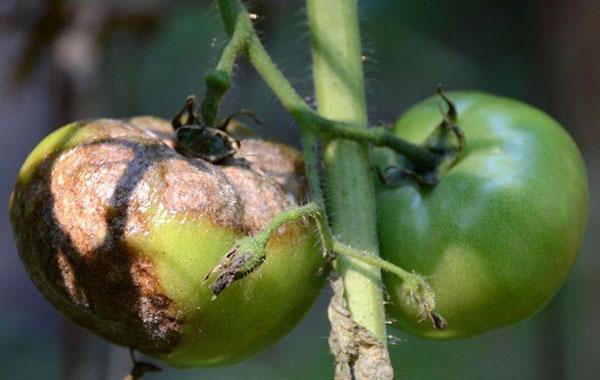 Late blight is a dangerous disease of nightshade that cannot be cured. Therefore, each farmer is interested in the question of how to get rid of phytophthora in a greenhouse. These fungal microorganisms also appear in polycarbonate structures. The spores inhabiting the soil begin to develop actively at a temperature of + 10 ° C.
Late blight is a dangerous disease of nightshade that cannot be cured. Therefore, each farmer is interested in the question of how to get rid of phytophthora in a greenhouse. These fungal microorganisms also appear in polycarbonate structures. The spores inhabiting the soil begin to develop actively at a temperature of + 10 ° C.
These mycelium affect all parts of the plant:
- Stems. They begin to darken or become covered with brown spots. Over time, living tissues soften and then dry out.
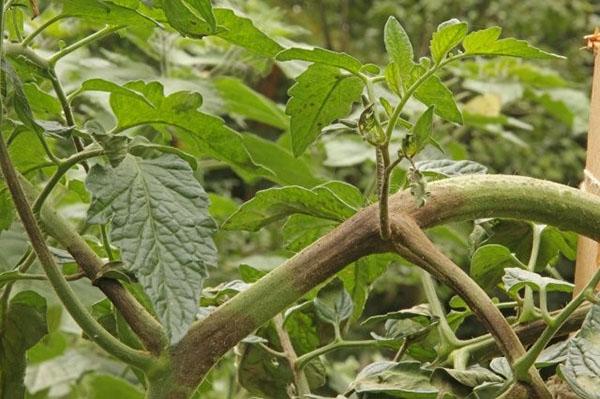
- Leaves. Affected foliage turns brown and curls. Often a white coating appears on it.
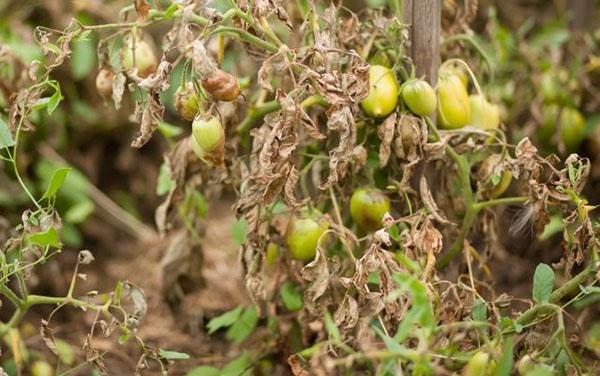
- Fruit. On vegetables, depressed spots of a dark shade appear. The skin in these places becomes thin. It is through it that the infection of neighboring plants occurs.
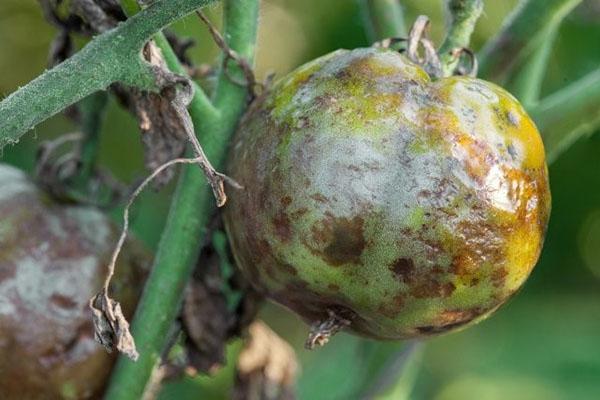
If you do not process the planting in time, you will have to destroy the entire crop. Therefore, it is important for an agronomist to painstakingly care for their plants. To do this, you will need not only to regularly inspect the crops, but also to carry out preventive measures.
How to get rid of late blight in a greenhouse: the important role of prevention
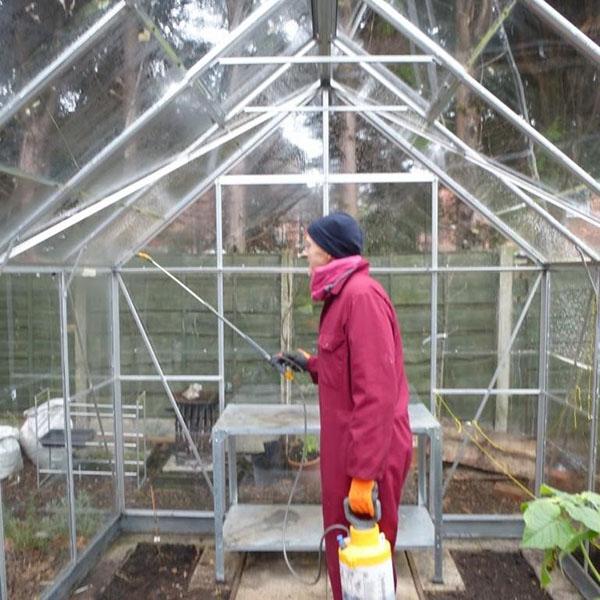 In agriculture, there is no universal remedy that could protect plants from late blight. To achieve success in this matter, you will have to apply a whole range of agricultural works. The first stage in the fight against fungal disease will be the treatment of the greenhouse from late blight. After harvesting, the structure is cleaned of debris and organic residues. The outer and inner parts of the structure are thoroughly sprayed with a disinfectant.
In agriculture, there is no universal remedy that could protect plants from late blight. To achieve success in this matter, you will have to apply a whole range of agricultural works. The first stage in the fight against fungal disease will be the treatment of the greenhouse from late blight. After harvesting, the structure is cleaned of debris and organic residues. The outer and inner parts of the structure are thoroughly sprayed with a disinfectant.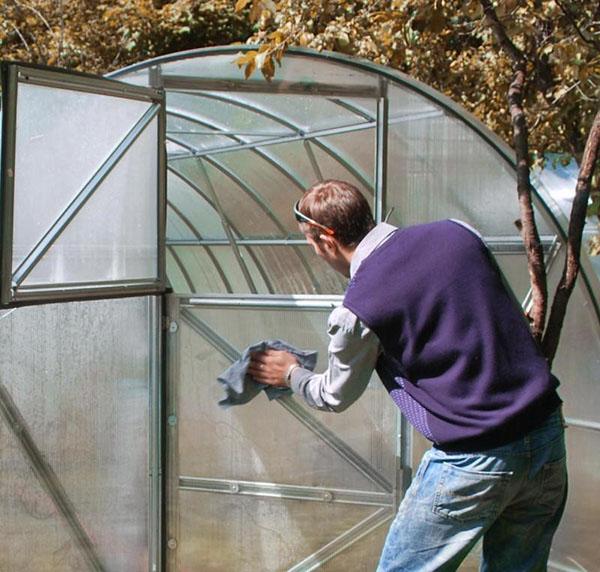
For this procedure, use:
- Solution copper sulfate... 100 g of powder is added to 10 liters of liquid. To spill soil, prepare a less concentrated suspension - 5 g / 10 l.
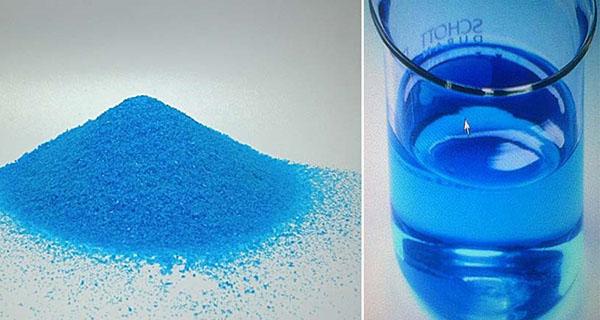
- Chlorine lime. This is the most effective method of struggle if the gardener does not know what to do with late blight in the greenhouse (from a wooden frame) in the fall. To prepare a poisonous mixture, 400 g of powder is diluted in 10 liters of water, infused for 3-4 hours, and then used. After the event, the premises are closed for 2-3 days.
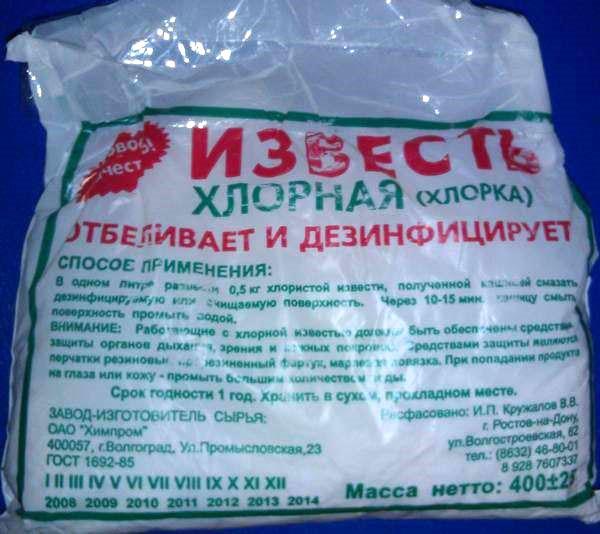
- Soap solution. With its help, the greenhouse is washed out of various kinds of pollution. However, in addition to this remedy, it is worth using more powerful fungicides.
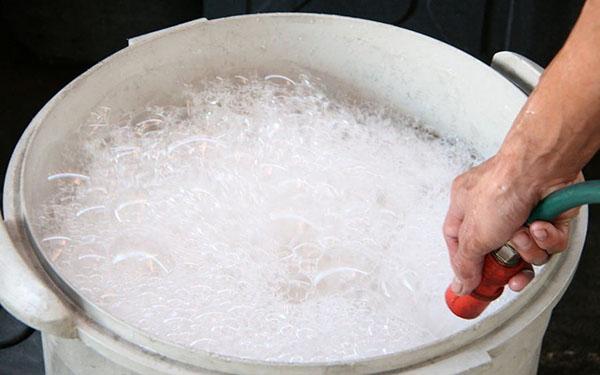
- Sulfur smoke bombs. The material is set on fire and the structure is closed for 2 days, so that the smoke penetrates into the most hidden places of the structure. After such a procedure, the gardener is unlikely to have a question of how to get rid of late blight in the greenhouse.
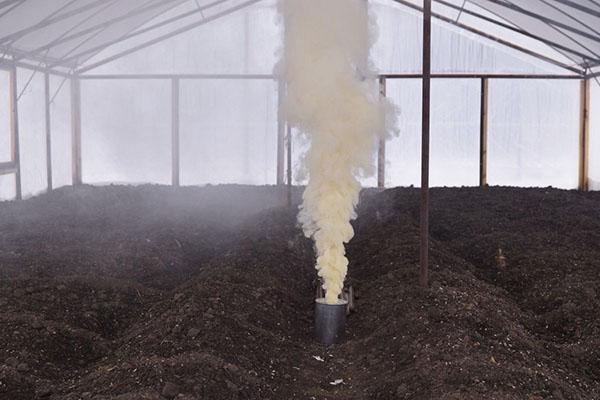
The season of active development of late blight lasts from May to September. Favorable conditions for the spread of spores are rainy weather and sudden temperature drops (day, night).
After such a general disinfection, the top layer of the soil is removed, removing 15-20 cm. Then a new disinfected soil is laid. At the onset of frost, the greenhouse is opened so that the substrate is thoroughly frozen. In addition, it is covered with a huge amount of snow to consolidate the result.
Soil cultivation from phytophthora is a whole science
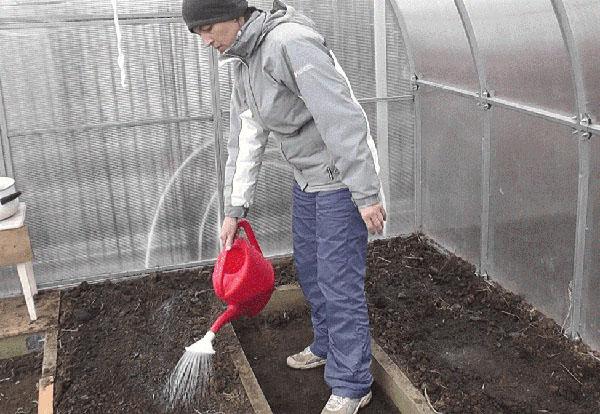 Sometimes the gardener does not have the opportunity to apply the above methods. Then he needs to find out how to cultivate the land from late blight in the spring. As soon as the air temperature rises above + 1 ... + 3˚С, they begin to destroy the "hidden" fungal organisms.
Sometimes the gardener does not have the opportunity to apply the above methods. Then he needs to find out how to cultivate the land from late blight in the spring. As soon as the air temperature rises above + 1 ... + 3˚С, they begin to destroy the "hidden" fungal organisms.
Several methods are used for this:
- Spilling the soil with boiling water. The beds are diligently watered with hot water.For reliability, potassium permanganate is added to the liquid - 1 g / 10 l.
- Biological preparations (effective only at temperatures above 15 ° C). Farmers often use Baktofit, Alirin B, Baikal EM-1, Trichodermin (complex product) and Planriz. Working solutions are added immediately before processing.

- Chemicals. They are used in special cases. Brodsky liquid (250 ml / 10 l) is used every 5 years, but not more often. They also use copper sulfate (2-5 g / bucket), a 4% solution of copper oxychloride, as well as drugs such as Kwardis, Farmayod and Oxyhom.

It should be borne in mind that late blight spores get used to any strong chemical preparations. Therefore, these funds must be alternated.
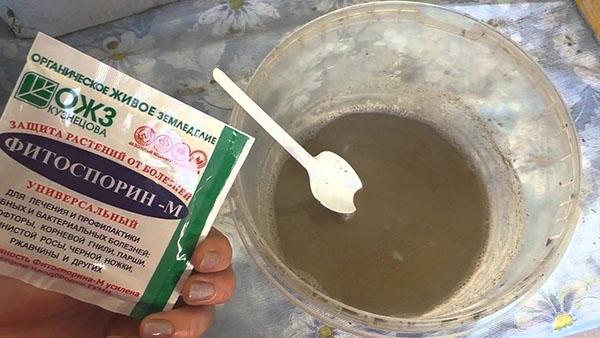 Greenhouse processing Fitosporin in the spring it includes spilling of soil with working solution. So, 10 liters of water and 6 ml of the preparation are added per 1 m². They also use a different method of preparing the working fluid. The package (100 g) is dissolved in 200 ml of water, stirring thoroughly so that there are no lumps. Then 1 tbsp is added to each bucket. l. the resulting emulsion. This amount of solution is enough to irrigate 2 m² of area. Then the wet soil is sprinkled with dry earth and covered with foil for several days. At the end, the shelter is removed, the soil is allowed to dry out, and the seedlings are planted.
Greenhouse processing Fitosporin in the spring it includes spilling of soil with working solution. So, 10 liters of water and 6 ml of the preparation are added per 1 m². They also use a different method of preparing the working fluid. The package (100 g) is dissolved in 200 ml of water, stirring thoroughly so that there are no lumps. Then 1 tbsp is added to each bucket. l. the resulting emulsion. This amount of solution is enough to irrigate 2 m² of area. Then the wet soil is sprinkled with dry earth and covered with foil for several days. At the end, the shelter is removed, the soil is allowed to dry out, and the seedlings are planted.
Saving the crop from late blight
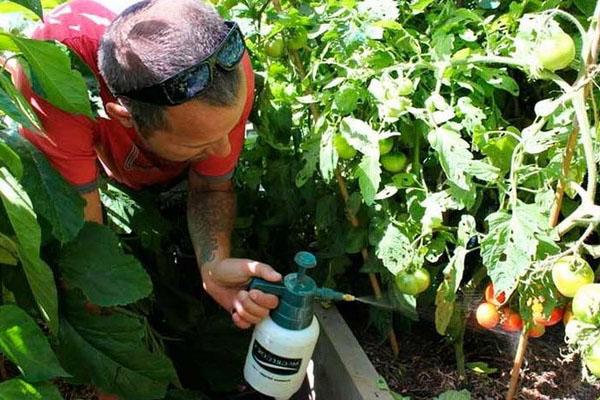 Despite the implementation of all preventive measures, plants can get sick with late blight. Therefore, you should regularly inspect crops to detect the first signs of damage. However, there is no need to wait for them to appear.
Despite the implementation of all preventive measures, plants can get sick with late blight. Therefore, you should regularly inspect crops to detect the first signs of damage. However, there is no need to wait for them to appear.
You need to take action immediately:
- after disembarking, powder the aisles wood ash;
- before flowering and during the formation of ovaries, spill the soil with an ash solution (5 kg / 10 l);
- during the growing season, treat every 10 days with fungicidal agents: Revus, Consento and Abiga-Peak.
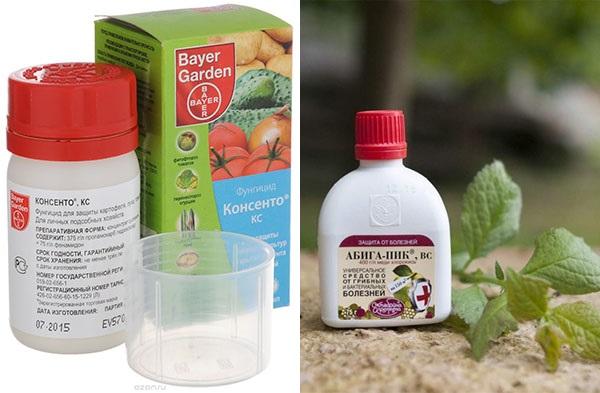 If brown spots begin to appear on the stems or leaves, agronomists recommend using biological products. Seedlings are processed with Gamir and Fitosporin at intervals of 10 days.
If brown spots begin to appear on the stems or leaves, agronomists recommend using biological products. Seedlings are processed with Gamir and Fitosporin at intervals of 10 days.
In the case of a strong and massive defeat of late blight planting, highly effective fungicides are used:
- Ordan;
- Previkur;
- Topaz;
- Fundazol;
- Infinito;
- Kwardis.
Pesticides should be diluted as indicated in the instructions. In addition, it must be remembered that pickled vegetables can be consumed only 10-14 days after spraying.
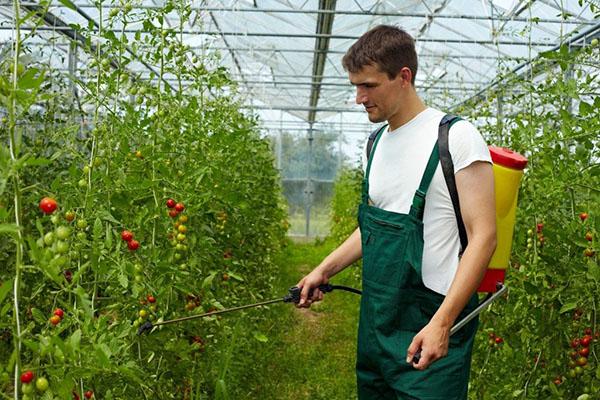 Many farmers successfully use folk remedies to combat late blight in the greenhouse. Moreover, such substances serve as excellent fertilizers for cultivated plants. One of these remedies is baking soda. In 10 liters of liquid, dissolve 3 tbsp. l. substances, as well as 20 g of soap (you can take liquid). The prepared solution is sprayed on the bushes every 7 days.
Many farmers successfully use folk remedies to combat late blight in the greenhouse. Moreover, such substances serve as excellent fertilizers for cultivated plants. One of these remedies is baking soda. In 10 liters of liquid, dissolve 3 tbsp. l. substances, as well as 20 g of soap (you can take liquid). The prepared solution is sprayed on the bushes every 7 days.
To emerge victorious in this struggle, you need to try to apply all these methods. The effectiveness of each of them depends on the local characteristics of the climate and soil. As a result, the gardener will know exactly how to get rid of late blight in the greenhouse. This cannot be done without experimentation.